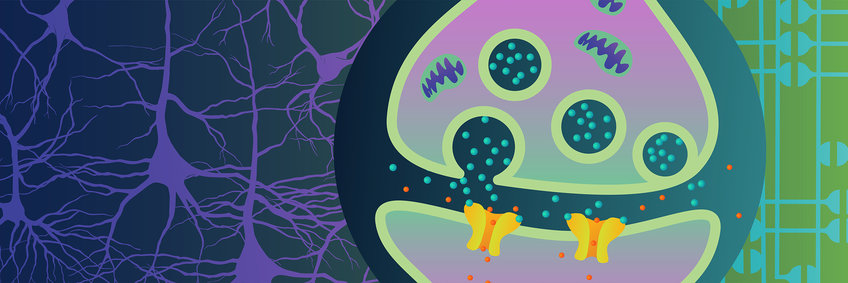
Origin and Function of Neurons
The brain harbors a large variety of cell types that fulfill diverse biological functions. Depending on their task and position, neurons process and integrate different signals, support and network with their neighbors and thus enable the multiple functions of the brain. Neurons develop from a few types of precursor cells and ultimately perform various tasks. We investigate these developmental processes and the functions of the resulting nerve cells that are a cornerstone of biological intelligence.
The origins of diversity
How does a developing nerve cell 'know' where it has to settle in the brain, which cell type it has to become and which neighbors it has to network with? We investigate how genes, but also signals from a cell’s interior and from its environment, determine a cell’s fate. At the end of their development, nerve cells are ready for their specific tasks and have formed links with other cells in neuronal networks, since nerve cells develop their full potential only in conjunction with their neighbors.
The workflows inside nerve cells
Studying the function of nerve cells helps us not only to better understand the biological processes inside them, but also the overarching processes that happen in the brain. To achieve this, we use, develop and combine diverse methods such as computer simulations, optogenetics, electrophysiology and microscopy. We want to understand how nerve cells process incoming signals and which signals they pass on to neighboring cells. We also investigate how neurons ensure that even remote locations in their long extensions, known as axons, are supplied with sufficient energy and the biomolecules they need for operation. Understanding which cell types and cellular adaptations enable certain behaviors or learning processes is another aspect of our research.
Recent research on this topic:
Departments and groups working in this area:
 Herwig Baier |
 Tobias Bonhoeffer |
 Alexander Borst |
 Winfried Denk |
 Lorenz Fenk |
 Manfred Gahr |
 Oliver Griesbeck |
 Angelika Harbauer |
 Rüdiger Klein |
 Christian Mayer |


